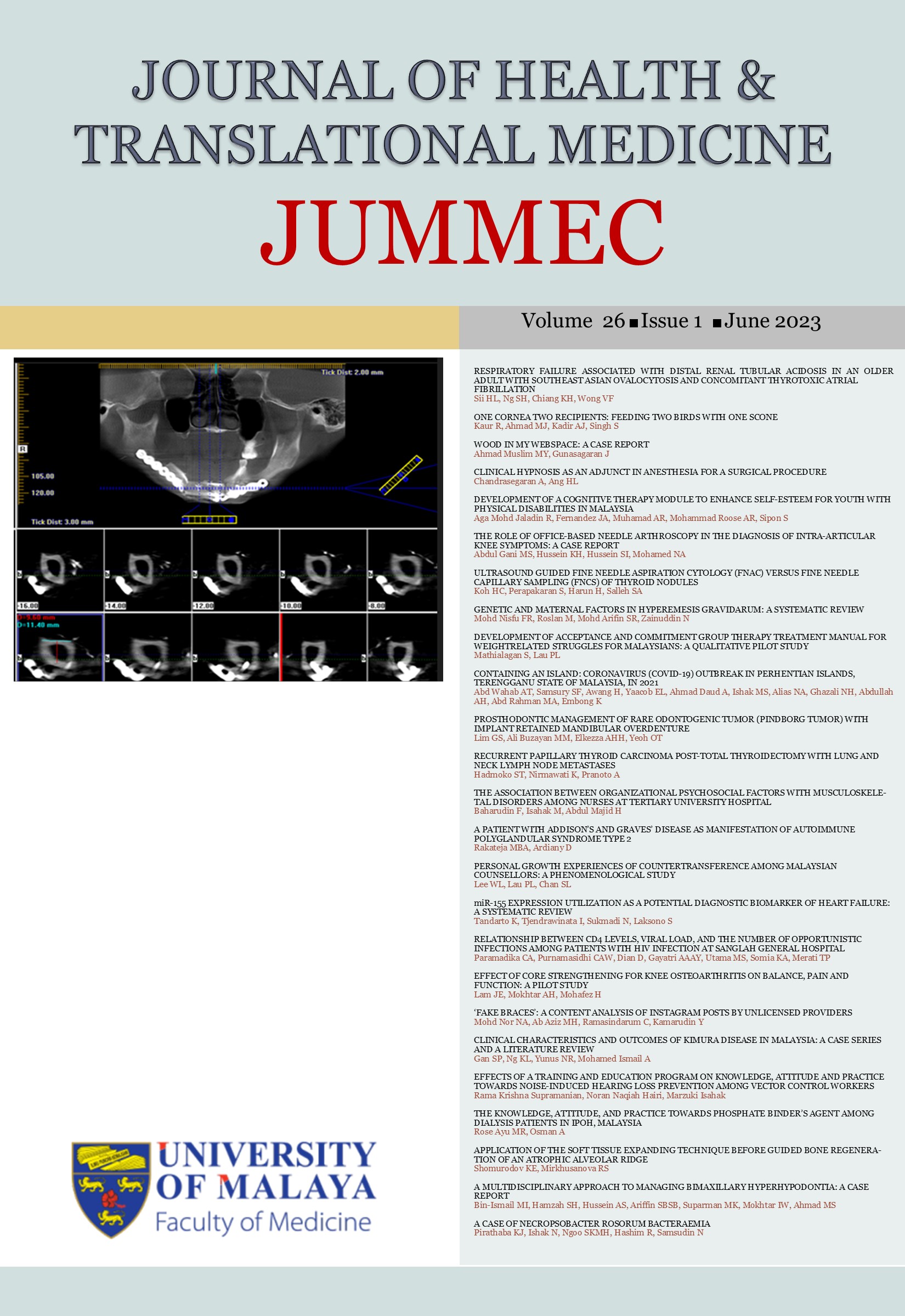EFFECTS OF A TRAINING AND EDUCATION PROGRAM ON KNOWLEDGE, ATTITUDE AND PRACTICE TOWARDS NOISE-INDUCED HEARING LOSS PREVENTION AMONG VECTOR CONTROL WORKERS
Received 2022-12-27; Accepted 2023-02-09; Published 2023-03-20
DOI:
https://doi.org/10.22452/jummec.vol26no1.21Keywords:
Health Education, Hearing Conservation, Noise-Induced Hearing Loss, Prevention, TrainingAbstract
Background: Noise-induced hearing loss (NIHL) is one of the most prevalent occupational disease globally. The objective of this study was to determine the effectiveness of a training and education program in increasing knowledge, attitude and practice (KAP) towards NIHL prevention among vector control workers.
Methods: This is a cluster-randomized controlled trial design involving 183 vector control workers from nine district health offices in the state of Perak, Malaysia. Both groups were followed-up for a period of 3 months. Changes in KAP score towards NIHL was measured at intervals of 1 month and 3 months post-intervention. Data was analyzed according to Per-Protocol (PP) principles.
Results: Both intervention and control groups showed increase in mean scores for all three domains (knowledge, attitude and practice) after 1 month but a larger improvement was seen in the intervention group for the attitude and practice domain in comparison to the control group. For the practice domain, the intergroup mean difference was 0.35% with 95% CI of -5.2 to 4.5. The greatest improvement was seen in attitude domain where the intergroup mean difference was 0.9% (95% CI -4.1, 2.3). At 3 months post-intervention, a greater improvement was observed in the intervention group compared to the control group for all 3 domains. The largest improvement was seen in the practice domain where the intergroup mean difference was -4.2 (95% CI -9.1, 0.7).
Conclusion: The training and education program was effective in maintaining the existing knowledge, attitude and practice of vector controls towards noise-induced hearing loss (NIHL). Continuous training and education is needed to cultivate good safety behaviour at workplace.
Downloads
Downloads
Published
Issue
Section
License
All authors agree that the article, if editorially accepted for publication, shall be licensed under the Creative Commons Attribution License 4.0 to allow others to freely access, copy and use research provided the author is correctly attributed, unless otherwise stated. All articles are available online without charge or other barriers to access. However, anyone wishing to reproduce large quantities of an article (250+) should inform the publisher. Any opinion expressed in the articles are those of the authors and do not reflect that of the University of Malaya, 50603 Kuala Lumpur, Malaysia.


